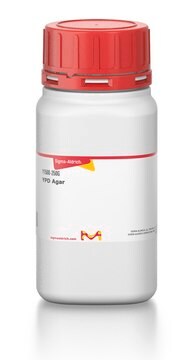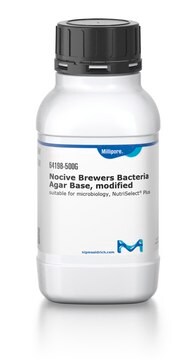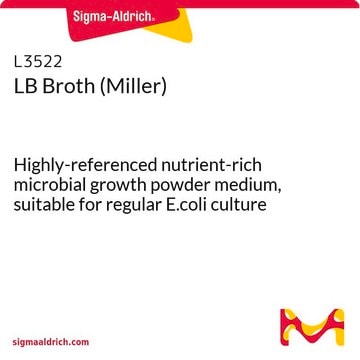A5306
Bacteriological agar
for molecular biology
Synonym(s):
Agar, Agar-agar, Gum agar
About This Item
Recommended Products
grade
Molecular Biology
Quality Level
form
powder
SMILES string
O1[C@@H]([C@@H]([C@@H]([C@H](C1OC2[C@H]3OCC2OC([C@H]3O)C)O)OC)O)CO
InChI
1S/C14H24O9/c1-5-8(16)13-11(7(21-5)4-20-13)23-14-10(18)12(19-2)9(17)6(3-15)22-14/h5-18H,3-4H2,1-2H3/t5?,6-,7?,8-,9+,10-,11?,12+,13+,14?/m1/s1
InChI key
GYYDPBCUIJTIBM-DYOGSRDZSA-N
Looking for similar products? Visit Product Comparison Guide
General description
Application
- as a component of ATCC agar for Escherichia coli culture
- as one of the experimental diet feed for Atlantic salmon fry, to study the protein and lysine requirements for maintenance and for tissue accretion
- as component of yeast extract peptone dextrose medium, Luria broth medium and synthetic complete drop out medium for Escherichia coli culture
Biochem/physiol Actions
Quality
Storage Class
11 - Combustible Solids
wgk_germany
WGK 1
ppe
Eyeshields, Gloves, type N95 (US)
Choose from one of the most recent versions:
Already Own This Product?
Find documentation for the products that you have recently purchased in the Document Library.
Customers Also Viewed
Protocols
Yeast Drop Out Bulletin. The selection of plasmids in yeast is based on the use of auxotrophic mutant strains, which cannot grow without a specific medium component (an amino acid, purine or pyrimidine). Transformation with a plasmid containing the mutated gene enables the transformant to grow on a medium lacking the required component. Although yeast can grow on a synthetic medium without any amino acids, better yield and growth rate can be achieved on richer media.
Our team of scientists has experience in all areas of research including Life Science, Material Science, Chemical Synthesis, Chromatography, Analytical and many others.
Contact Technical Service







